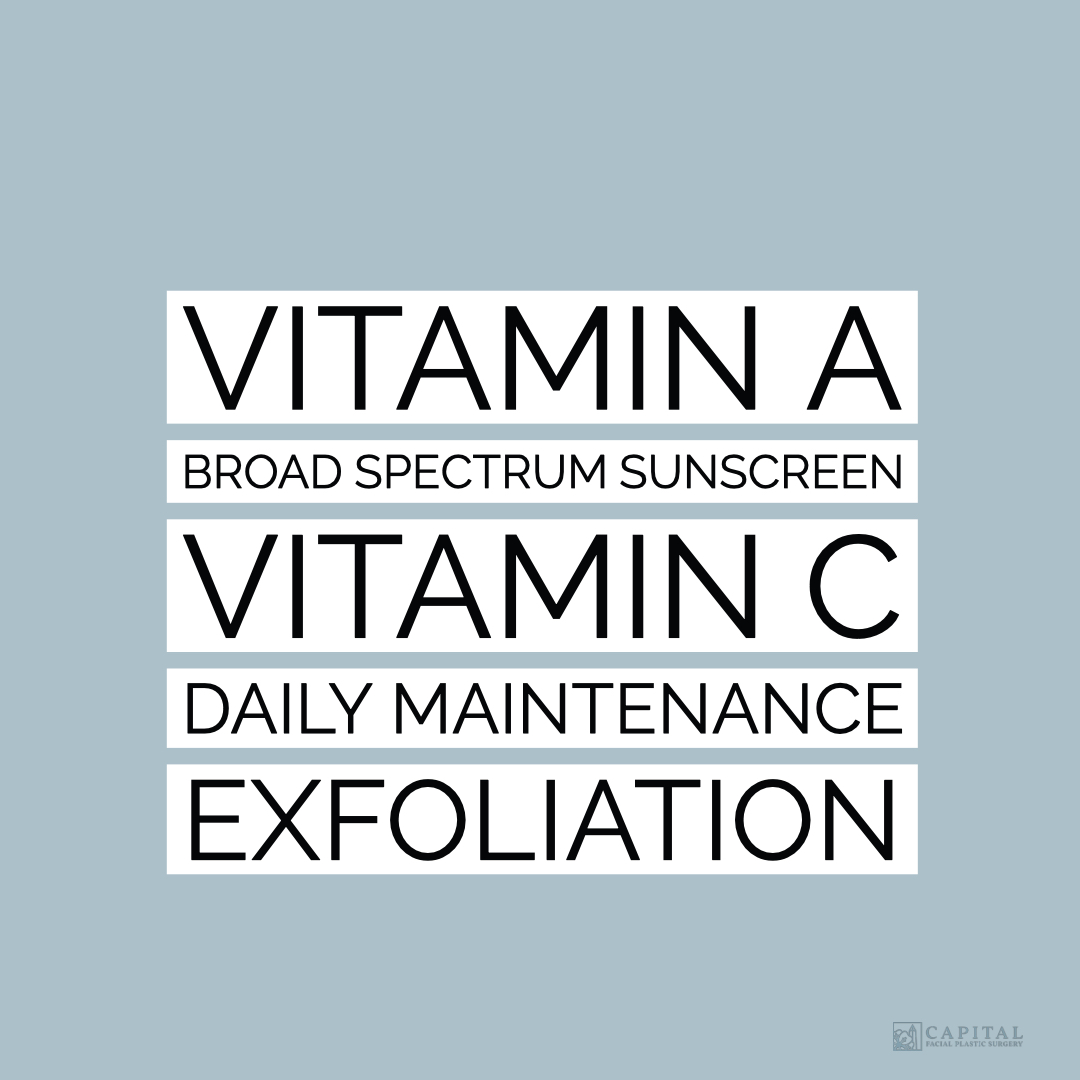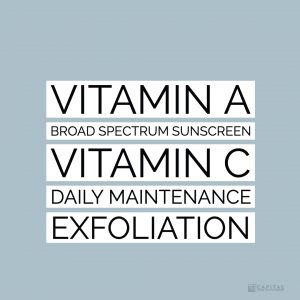Skin Care Series – Part 1: It’s as easy as ABC


Skin Care - It's as easy as ABC
Part 1
Our skin is the largest organ in our body and is subjected to constant stresses: ultraviolet (UV) radiation, pollution, and of course aging. Facial skin is especially important, as the face receives the most amount of sunlight on our body, and is therefore most susceptible to factors that induce aging skin. Looking for quality skin care products can be daunting to say the least. Search Amazon for skin care and you literally get over 200,000 results. Obtaining healthy, quality skin doesn’t have to be difficult though, in fact it’s as easy as your ABC’s.
The ABC’s of skin care are simple:
Vitamin A
Broad spectrum sunscreen
Vitamin C
Daily maintenance
Exfoliation
Before I get into the nitty gritty of each, it’s important to recognize that aging of the face is a result of multiple simultaneous factors, of which there are three main components. This series of posts will be tackling the aging of the skin and what to do about it, while future series will address the other important factors in facial aging: loss of volume and sagging of the support structures of the face.
I’m going to go briefly out of the ABC order to start, so bear with me. As mentioned above, UV radiation plays a very large role in accelerating facial aging. The damaging rays of the sun include UV-A and UV-B rays, and both types cause damage at the cellular and molecular level. The sun’s harmful rays result in the formation of free-radicals, which are substances that change the molecular structure of the skin in a negative manner.
These free radicals cause the collagen that you have in your skin to degrade, which results in more sagging of the skin. This loss of collagen is also one of the culprits in the formation of wrinkles throughout the face and body. More importantly, the UV-A and UV-B rays cause molecular damage to the DNA of the skin cells, which can result in skin cancers and other cutaneous malignancies.
Since human beings are not vampires, avoiding going outside during the daytime is not really an option. Protective clothing like large hats and scarves will help block the sun’s rays from reaching the face, but Broad spectrum sunscreen is the next best thing to add to your regimen. A sunscreen that protects from both UV-A and UV-B is a must, and a higher number sunscreen is even better (think SPF 45 or greater).
Another thing to think about is the method through which the sunscreen works to block the rays – chemical absorption or physical blockade. Chemical-based sunscreens incorporate into the skin and absorb the harmful UV rays that reach the skin. These sunscreens are more waterproof than the alternative, mineral-based sunscreens. The aforementioned mineral-based sunscreens physically block the sun’s rays from entering the skin, but are more easily washed off with sweat and water. Fortunately, most sunscreens contain both types of protection, but it is always a good idea to look at the ingredients yourself to figure it out.
When it comes to sunscreen for my patients, I recommend PCA Skin’s Weightless SPF 45. It protects from both UV-A and UV-B, contains zinc oxide for mineral-based coverage and oxtinoxate for chemical-based coverage, and is so light on the skin after applying that it literally feels like it disappears. It also has goodies like caffeine (a noted antioxidant), SIlybin (another good antioxidant), and Vitamin E. I like this product so much that it is actually what I use on my children!
Next time around we’ll be discussing Vitamins – which are good for your skin 🙂



